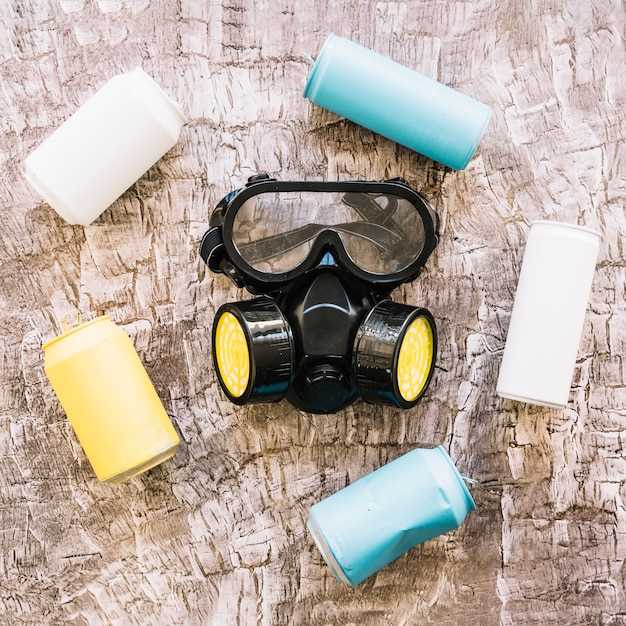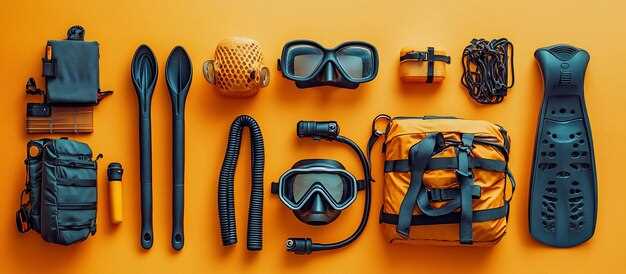
When it comes to off-road adventures, equipping your jeep with essential gear can make all the difference between an exhilarating experience and a frustrating one. Among the most critical enhancements are snorkels and skid plates, which provide the necessary armor to tackle challenging terrains. These components not only protect your vehicle but also enable you to explore environments that would otherwise be off-limits.
A snorkel elevates your jeep’s air intake, allowing it to breathe in clean air while wading through deep water or dust-laden trails. This innovative modification minimizes the risk of engine damage caused by water ingestion, which is a common concern for off-road enthusiasts. Additionally, a snorkel helps improve your vehicle’s performance in harsh conditions, ensuring that your adventures remain uninterrupted.
On the other hand, skid plates serve as the vital armor of your jeep, shielding its undercarriage from rocks, branches, and other potential hazards encountered during exploratory drives. By installing durable skid plates, you enhance the resilience of your vehicle, allowing it to tackle rough landscapes without fear of damage. Together, snorkels and skid plates form a formidable duo that prepares your jeep for any off-road challenge, ensuring safety and longevity on every journey.
Understanding Jeep Snorkel Functionality

A snorkel is an essential accessory for off-road enthusiasts, particularly for Jeep owners. It serves as an air intake system that elevates the engine’s air supply above potential water levels, protecting the engine from water intrusion during deep-water crossings. This is crucial for maintaining performance and preventing costly damage to the engine’s components.
When traversing muddy trails or streams, a snorkel ensures a clean supply of air is routed to the engine, filtering out debris and preventing it from sucking in water through the standard air intake located near the underbody. By elevating the intake, the snorkel dramatically reduces the risk of hydro-lock, a condition that occurs when water enters the engine cylinders, leading to severe engine failure.
In addition to preventing water damage, a snorkel can also improve engine performance by providing a steadier airflow, especially in challenging terrains. Off-road driving often requires the vehicle to maneuver through dusty or sandy environments, where the snorkel acts as a protective armor, safeguarding the engine from contaminants while facilitating optimal air intake for combustion.
Furthermore, the installation of a snorkel may also be accompanied by underbody armor to shield critical components from rocks and obstacles encountered during off-road adventures. This combination enhances the vehicle’s resilience, allowing drivers to traverse rugged landscapes with confidence, knowing that their Jeep is well-equipped to handle the challenges ahead.
Benefits of Installing Underbody Armor
Underbody armor is an essential upgrade for any serious off-road enthusiast, especially for those who own a jeep. This protective equipment serves multiple functions that enhance your vehicle’s durability and performance in rugged terrains.
One of the primary benefits of underbody armor is its ability to shield vital components from damage. When navigating rocky paths or uneven surfaces, the risk of impacts is significantly increased. Underbody armor protects sensitive elements such as the gas tank, transfer case, and differentials, ensuring that your adventures remain uninterrupted by costly repairs.
Moreover, underbody armor can improve your vehicle’s off-road capabilities. By reinforcing the jeep’s chassis, it provides extra stability, allowing for better handling and control during extreme maneuvers. This defense allows you to focus on the adventure ahead without worrying about the integrity of your ride.
Additionally, the installation of underbody armor may help boost your vehicle’s resale value. Many buyers look for well-equipped vehicles, particularly those prepared for off-roading. Having a reinforced underbody can be a significant selling point, attracting enthusiasts who appreciate enhanced durability.
| Benefits | Description |
|---|---|
| Impact Protection | Safeguards critical components from damage during off-road excursions. |
| Increased Stability | Provides reinforced support, improving control and handling on rough terrain. |
| Enhanced Resale Value | Attracts potential buyers by showcasing the vehicle’s off-road preparedness. |
Lastly, installing underbody armor can lead to reduced maintenance costs in the long run. By preventing potential damages and preventing exposure to harsh elements, you will save money on repairs and maintenance, allowing you to invest more in your off-road adventures, possibly even upgrading other essential components like snorkels.
Choosing the Right Snorkel for Your Jeep Model
When embarking on off-road adventures, selecting the appropriate snorkel for your Jeep model is crucial for optimizing performance and ensuring the longevity of your vehicle. A well-chosen snorkel allows for efficient air intake while traversing through dusty or watery environments. It is essential to understand the specific requirements of your Jeep to make an informed choice.
Firstly, consider the compatibility of the snorkel with your Jeep’s engine and underbody configuration. Different Jeep models may require unique snorkel designs to fit properly and function effectively. Research manufacturer specifications and installation guidelines to ensure that the snorkel aligns with your vehicle’s architecture, particularly the underbody components.
Next, evaluate the snorkel’s material and durability. Off-road conditions can be demanding, so opting for high-quality materials like rotomolded plastic or stainless steel offers excellent resistance against impacts and harsh environments. Additionally, remember that a snorkel equipped with proper armor can enhance protection around sensitive areas, minimizing damage during rugged excursions.
Airflow is another critical factor. Ensure that the snorkel’s design promotes optimal airflow to prevent engine strain. Look for snorkels featuring large diameter pipes that reduce restrictions, allowing your Jeep’s engine to breathe more freely. This is particularly vital when navigating through deep water or dusty trails.
Lastly, consider your specific off-road needs. Whether you plan on tackling muddy terrain or river crossings, choosing a snorkel designed for those conditions can significantly impact your Jeep’s performance. A snorkel with a pre-cleaner or rainshield can prevent debris and water from entering the intake system, providing added peace of mind during your adventures.
How Skid Plates Protect Your Vehicle’s Critical Components
When venturing off-road, protecting your vehicle is paramount, especially for those equipped with a snorkel, as it enables deeper water crossings. Skid plates serve as an essential line of defense for your vehicle’s underbody, safeguarding critical components from damage.
Here are the primary benefits of skid plates:
- Protection from Impacts: Skid plates absorb and deflect impacts from rocks, tree roots, and other obstacles encountered off the beaten path. This prevents damage to vital components such as the engine, transmission, and fuel tank.
- Durability: Made from robust materials like aluminum or steel, skid plates are designed to withstand harsh conditions and heavy abuse, ensuring long-term protection for your jeep.
- Enhanced Approach Angles: By lowering the vehicle’s underbody profile, skid plates can also improve approach angles, allowing for better maneuverability during challenging terrains.
- Ease of Maintenance: With skid plates in place, regular maintenance checks become easier. They allow access to crucial components while still providing necessary protection.
Installing skid plates enhances not only the durability of your jeep but also offers peace of mind. Knowing that your vehicle’s critical components are shielded from harm encourages exploration and adventure.
By choosing the right skid plates, you ensure that your off-road vehicle is adequately protected, enabling you to focus on enjoying the thrill of the ride rather than worrying about potential damage.
DIY Installation Tips for Snorkels and Skid Plates
Installing a snorkel and skid plates can significantly enhance your vehicle’s off-road performance. Here are some essential tips to guide you through the DIY installation process.
Before starting, gather all necessary tools and components. This typically includes a drill, wrenches, screwdrivers, and the specific snorkel and skid plate kits for your vehicle model. Always consult the installation manual provided by the manufacturer for specific instructions related to your model.
When installing a snorkel, focus on the area of the vehicle’s front fender. Ensure you choose a location that allows for optimal air intake while avoiding any obstructions. Mark the drilling points carefully, making sure that the snorkel aligns with the air intake path. Use a hole saw for a clean cut, and take your time to avoid damaging the vehicle’s structure.
After securing the snorkel, double-check all connections and seal any potential leaks with silicone sealant. Proper sealing is crucial to prevent water from entering the engine during wet or muddy conditions.
Next, turning to skid plates, assess the vehicle’s underbody to determine the areas that require protection. Skid plates should be installed on critical components such as the oil pan, transmission, and fuel tank. Lay out the plates to ensure they cover all vulnerable areas adequately.
Use mounting brackets and bolts provided in your skid plate kit. If the installation does not come with pre-drilled holes, mark and drill appropriately. Reinforce the skid plates to prevent rattling or movement during off-road excursions. Be sure to leave clearance for any moving parts.
Finally, after installation, conduct a thorough inspection. Check all attachments to ensure they are secure, and test the setup in a safe off-road environment. Regular maintenance checks of the snorkel and skid plates will help ensure they perform optimally throughout your adventures.
Maintenance Practices for Longevity of Off-Road Upgrades

Proper maintenance of your Jeep’s off-road upgrades is essential to ensure their durability and functionality. Off-road adventures can subject your vehicle to harsh conditions, making routine checks and care indispensable. Here are key practices to follow:
1. Regular Inspections: Frequently examine your armor and underbody components for signs of wear, cracks, or corrosion. Pay special attention to skid plates, as they endure significant impacts. Catching damage early can prevent costly repairs.
2. Cleaning: After off-road excursions, thoroughly wash your vehicle, focusing on the underbody. Dirt, mud, and salt can accumulate and lead to corrosion over time. Use a pressure washer to remove debris from skid plates and armor components.
3. Lubrication: Ensure that any moving parts attached to your upgrades are well-lubricated. This maintenance step is crucial to prevent squeaking and ensure smooth operation, especially for components like skid plate mounts.
4. Rust Prevention: Apply rust-proofing products to protect the armor and underbody from oxidation. This step is particularly important if you often drive in wet or salty environments.
5. Tightening Hardware: Regularly check and tighten all bolts and fasteners associated with your upgrades. Off-road conditions can loosen hardware, which can lead to adverse effects on performance and safety.
6. Replace Worn Parts: If you notice any components showing signs of significant wear or damage, replace them immediately. Investing in new parts can save you from further issues during your next adventure.
By implementing these maintenance practices, you can significantly extend the life of your Jeep’s off-road upgrades, ensuring you enjoy many more thrilling adventures.




